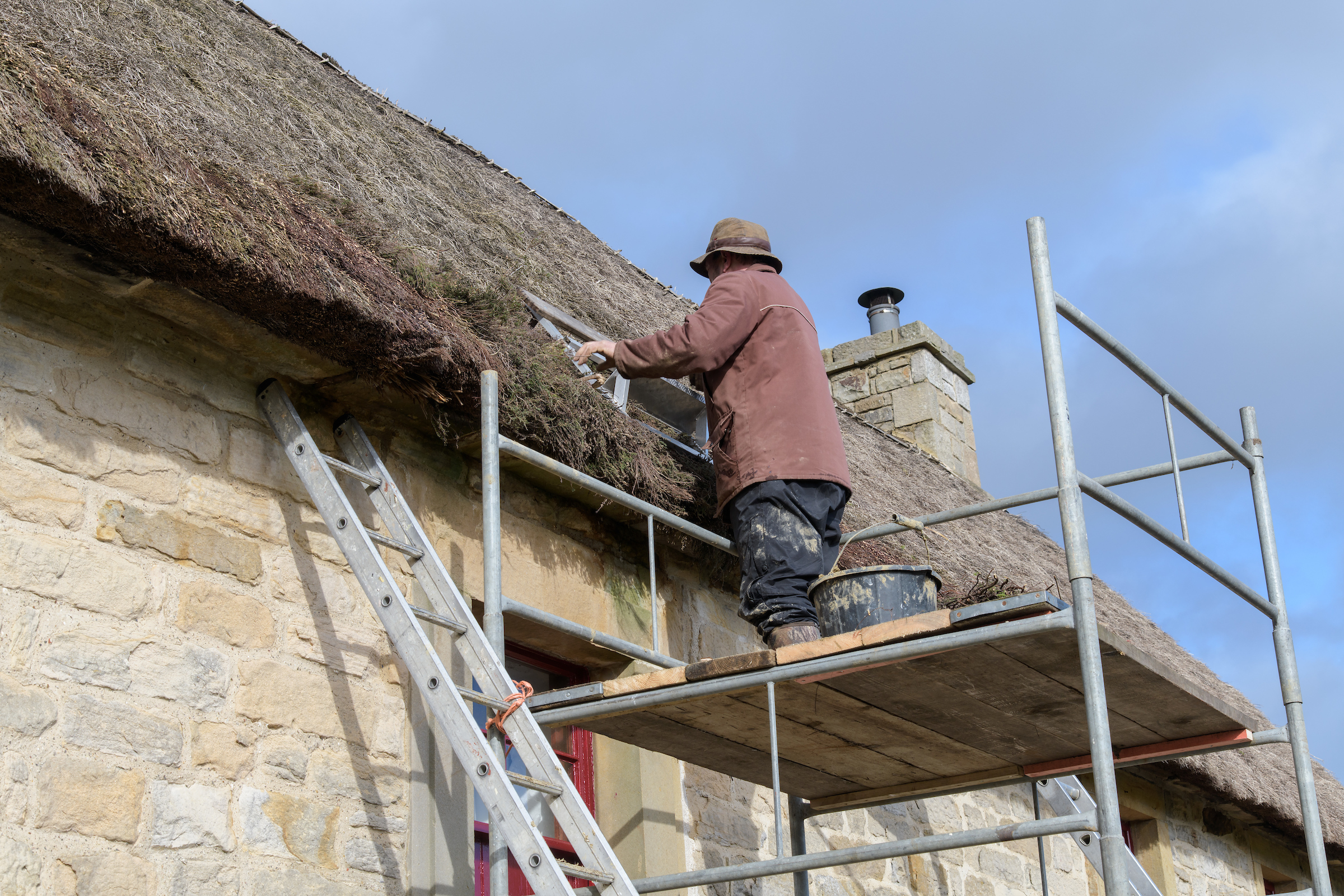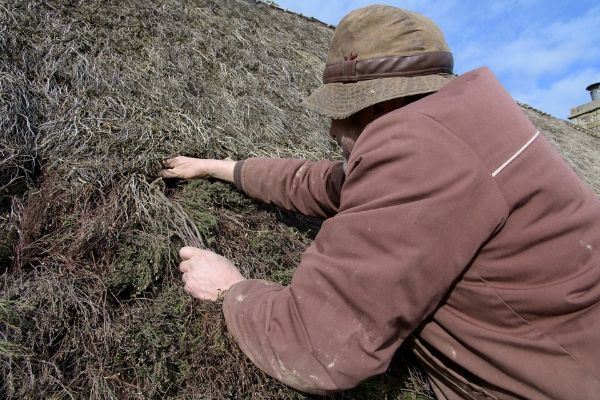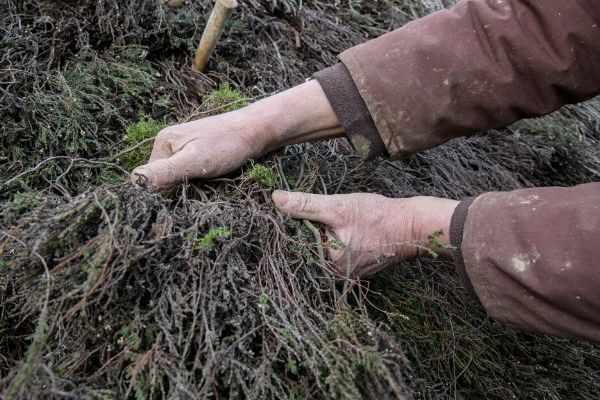In rural areas, when transport was difficult, vernacular architecture made use of local materials, giving our regions their local distinctiveness. Thatch was a common roofing material; reed was used in wetland areas, long straw in arable lands and in upland areas, heather and sedge were commonly seen. Heather was a difficult material to use - it required careful harvesting and laying to create a watertight roof and it needed replacing every 20 years. With improved transport came metal sheet, slate and tiles and it is unsurprising that heather thatch was generally replaced by these more predictable and longer-lasting materials when finances allowed.
By the time the Landmark Trust took on Causeway House in the late 1980s, only a handful of heather-thatched buildings remained - mainly in the Scottish Highlands. The building knowledge of the construction - a skill passed down from father to son and rarely documented - had been lost. We had to unpick the small amount of thatch remaining to find clues as to the original thatching method. This, together with a brief description of heather thatch found in a Victorian publication, gave just enough information to lay a new heather thatch roof.

The house opened to guests in 1990 and the roof remained watertight for nearly 10 years, before areas started to fail, with problems not just with failure of the heather, but also the fixing methods that had been developed mainly from reed and straw thatching. Master Thatcher Stephen Letch was brought in to investigate and repair the roof.
Stephen carried out patch repairs in 2005 and in 2006 he re-laid the heather on the main roof of the house, developing a deeper knowledge of how to harvest and lay the heather as work progressed. By the time he came to re-lay the goat house roof, he had a richer understanding of how heather thatching would have been carried out. Bunches of heather known as loggins, were laid on the roof and weighted in place with thick turf divots, the ridge is clad with turf, providing the distinctive grassy cap.


The roof is still performing well. Stephen Letch visited Causeway House earlier this year to carry out repairs to the main roof and found that the leaks were a result of poor masonry detailing, rather than the thatch. Repairs were made, this time using mud bed on the heather loggins to compensate for poor stonework details at the head of the wall. The main body of thatch is still performing well after 12 years.
As far as we are aware, Causeway House is the last inhabited heather-thatched house in England. Within a relatively short space of time, we have had to understand skills developed over hundreds of years. While we still have a lot to learn, with every repair we have discovered more about this lost art – something which has undoubtedly contributed towards our success in restoring the heather thatching at Causeway House.